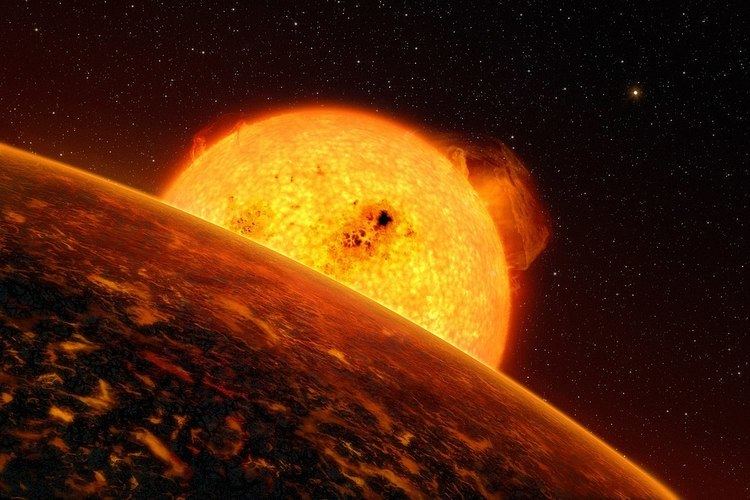 | ||
Chthonian planets (/ˈkθoʊniən/, sometimes 'cthonian') are a hypothetical class of celestial objects resulting from the stripping away of a gas giant's hydrogen and helium atmosphere and outer layers, which is called hydrodynamic escape. Such atmospheric stripping is a likely result of proximity to a star. The remaining rocky or metallic core would resemble a terrestrial planet in many respects.
Contents
Etymology
Chthonia (from Greek: Χθών) means "of the Earth". The term was coined by Hébrard et al., since the term chthonian generally refers to Greek deities from the infernal underground.
Possible examples
Transit-timing variation measurements indicate for example that Kepler-52b, Kepler-52c and Kepler-57b have maximum-masses between 30 and 100 times the mass of Earth (although the actual masses could be much lower); with radii about 2 Earth radii, they might have densities larger than that of an iron planet of the same size. As such exoplanets orbit very close to their stars they could be the remnant cores of evaporated gas giants or brown dwarfs. If cores are massive enough they could remain compressed for billions of years despite losing the atmospheric mass.
As there is a lack of gaseous "hot-super-Earths" between 2.2 and 3.8 Earth-radii exposed to over 650 Earth incident flux, and such lack is not supported by statistics, it is assumed that exoplanets below such radii exposed to such stellar fluxes could have had their envelopes stripped by photoevaporation.
HD 209458 b is an example of a gas giant that is in the process of having its atmosphere stripped away, though it will not become a chthonian planet for many billions of years, if ever. A similar case would be Gliese 436b, as it has already lost 10% of its atmosphere.
COROT-7b is the first exoplanet found that might be chthonian.
Terraforming
The hydrodynamic escape model could be used as a method of terraforming gas giants and other gaseous worlds. The leftover core could then be terraformed in the same process as a lava planet.
